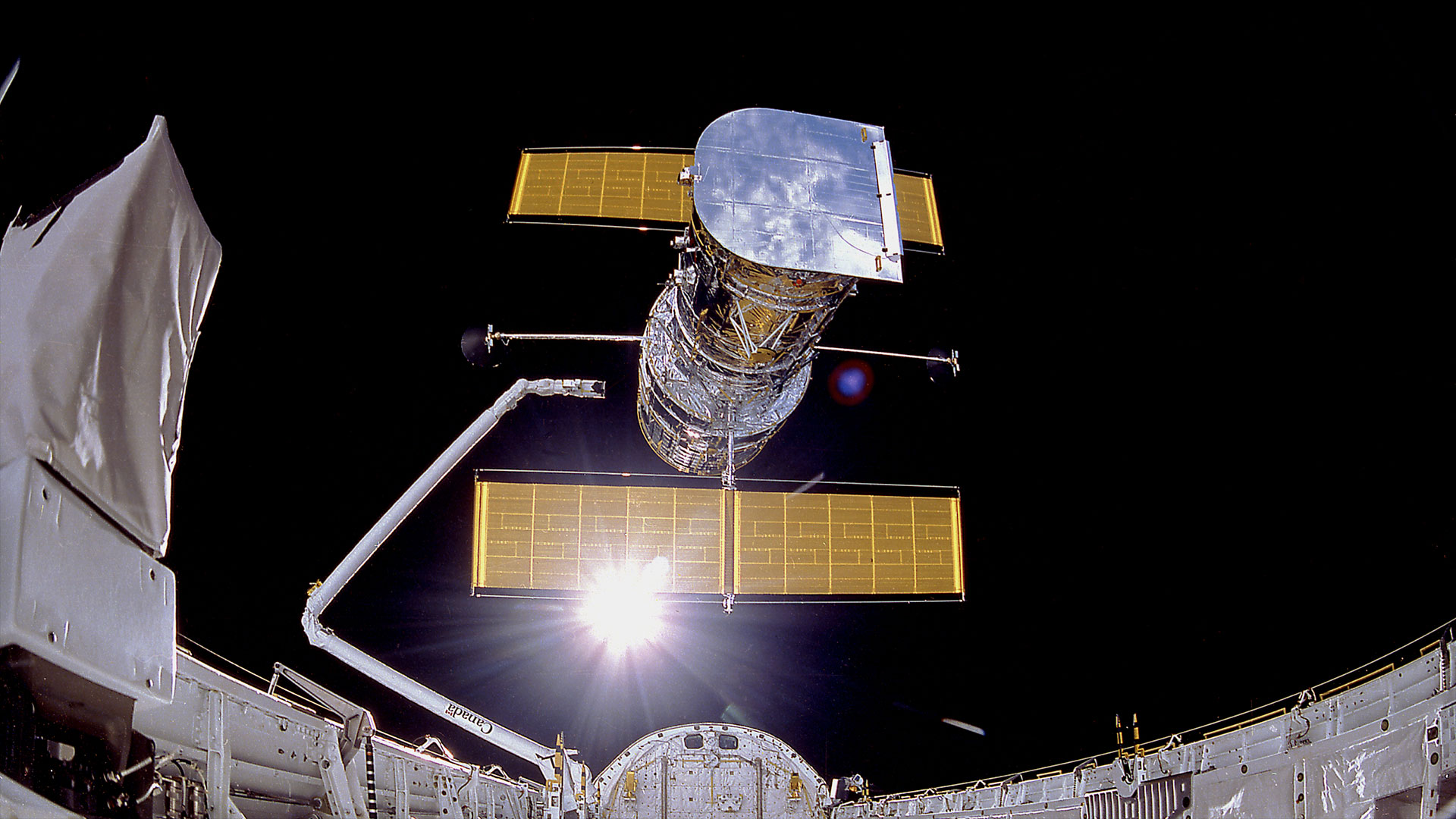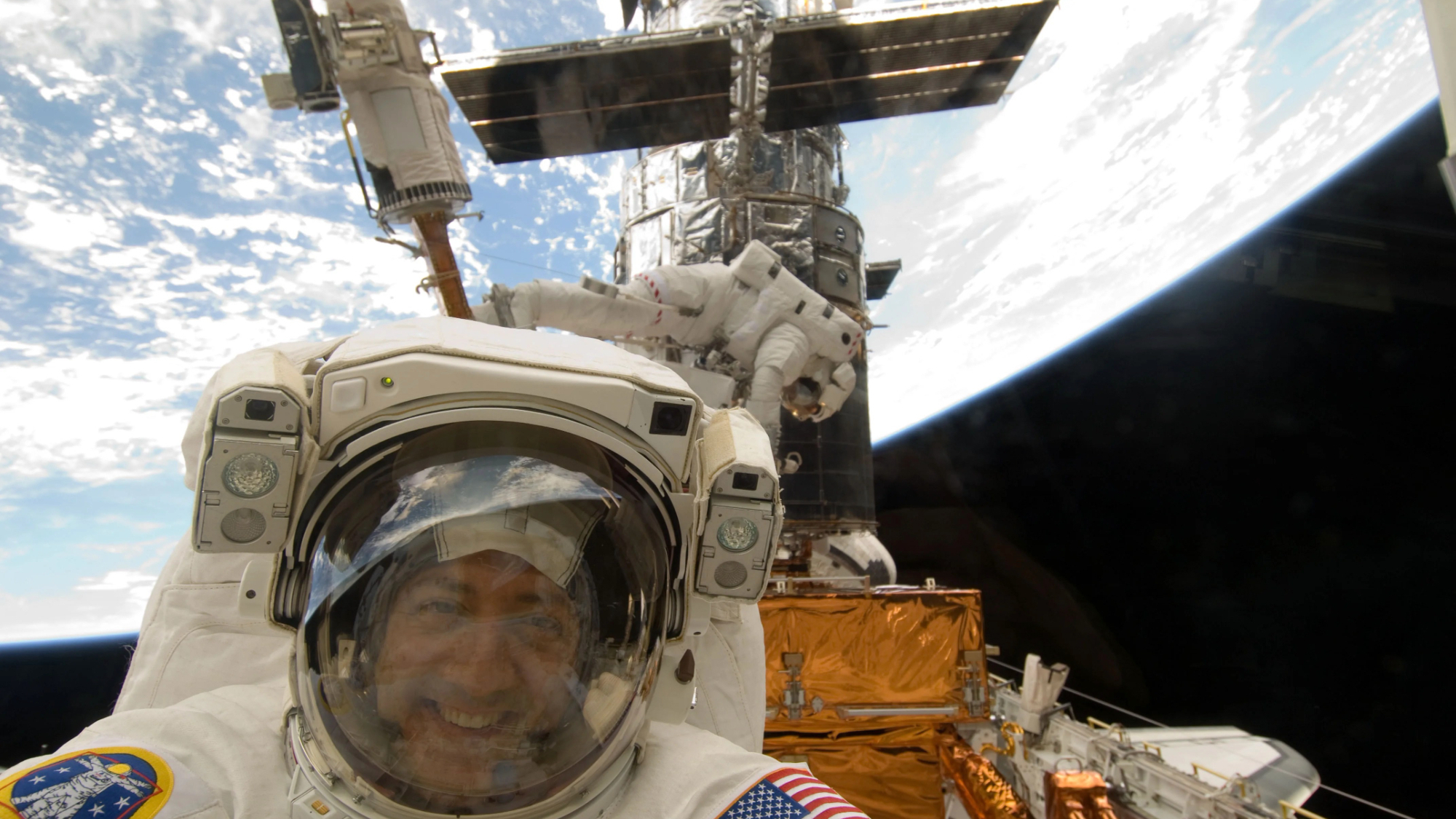The Search For Volcanic Eruptions On Mars Reaches The Next Level

A new study of emissions from Martian volcanoes suggests there is no activity going on right now, but researchers aren't ruling out recent eruptions.
Using NASA's Infrared Telescope Facility at Mauna Kea in Hawaii, the science team searched for signs of sulfuric acid — a key indicator of volcanic activity. They focused on the major volcanic provinces of Mars (Tharsis and Syrtis Major) in two, multi-week observation sessions, one from December to January 2012, and another in May and June 2014.
From Earth, they couldn't spot any signs of volcanic eruptions in those brief periods. These findings match similar negative results from searches the team conducted using the Very Large Telescope in Chile (an optical telescope) and the California Institute of Technology's Palomar Observatory radio telescope. [The Search for Life on Mars (Photo Timeline)]
Different types of molecules emit characteristic "signatures" based on the energy of their individual elements, with each one acting as a sort of fingerprint for investigators. In radio wavelengths, the search technique is slightly different; scientists look for distinctive lines that occur as the molecules rotate. Fortunately, sulfuric acid shows up quite well in these wavelengths.
The results were presented at the American Astronomical Society Department of Planetary Sciences meeting in November under the title, "A new search for active release of volcanic gases on Mars: Sensitive upper limits for OCS," led by Alain Khayat (University of Hawaii).
Researcher and co-author Geronimo Villanueva says the next logical step in the research is getting up close to Mars to do a lengthy search. Fortunately for Villanueva, he has use of an instrument approved on a forthcoming European spacecraft to do that very thing.
"From Earth, searching is tricky. Telescope time only gives you a particular time or instance and you don't have the whole picture," said Villanueva, a research assistant professor at Catholic University of America in residence at NASA Goddard Space Flight Center. "The orbiter provides daily maps of the atmosphere, so we're going to learn a lot about the actual processes on the planet."
Get the Space.com Newsletter
Breaking space news, the latest updates on rocket launches, skywatching events and more!
Villanueva is a co-investigator of NOMAD (Nadir and Occultation for Mars Discovery), a spectrometer that will fly on the 2016 ExoMars Trace Gas Orbiter with the European Space Agency. The instrument will not only look for volcanism — a sign of energy that could be a source for life to grow on — but also organic substances that could indicate byproducts of life itself.
On Earth, for example, volcanoes recycle carbon dioxide, which plants use, and also spew out plant-friendly ash. Hot springs are also a common feature of nearby volcanoes, and they form when heated rocks underground interact with groundwater. Despite the tough environment of hot springs — the high temperature and acidity, for example — certain organisms, such as extremophiles, live in this habitat. [Mars Myths & Misconceptions: Quiz]
A dynamic planet
When spacecraft first visited Mars in the 1960s, geologists believed they were looking at a dead planet. NASA's first Mariner spacecraft coincidentally passed by areas that were mostly cratered, taking on an appearance similar to the Moon.

Mariner 9 changed that perception forever. The spacecraft arrived at Mars for the first orbital mission in 1972, only to see a global dust storm engulfing the Red Planet. A few odd, circular features appeared to be sticking out of the dust. When the debris slowly subsided, scientists realized they were looking at vast volcanoes, including Olympus Mons, which rises 16 miles (25 kilometers) high, or about three times higher than Earth's Mount Everest.
One key question was whether these volcanoes were extinct. It's a question still puzzling researchers today, although with each subsequent spacecraft has come more information. In 2004, for example, the European Space Agency's Mars Express spacecraft examined Olympus Mons, and geological evidence suggested that lava flowed in the area within the past two million years, implying the volcano may still erupt again.
Evidence of recent volcanic eruptions would require either direct observations or looking for the products of their emissions in the atmosphere. Based on Earth observations, sulfuric acid would be the most likely trace gases. On Mars, however, there has been little in the way of systematic searches.
Earth-based observations tend to happen under the limitations of available telescope time (which is typically only days or weeks). There is also the issue of poor resolution. Perhaps eruptions do happen, but at such small levels that they cannot be detected easily from our planet. Researchers endeavor to get readings from higher up in our atmosphere where it's dryer and where it's less likely for atmospheric water to interfere. To that end, Villanueva said that a dedicated Mars orbiter will be a key step.

NOMAD will examine Mars in three ways. Using technology heavily based on the Venus Express mission, it has three channels. One is a solar occultation channel that provides information on gas composition when the Sun is visible through the atmosphere. Another one is a channel that is more sensitive to emissions as seen from the surface, and that will be primarily downward facing during the mission. The third channel permits observations at ultraviolet wavelength searching for sulphuric acid, ozone and also allows for aerosol studies.
Working with other spacecraft
The main targets of NOMAD will be organic molecules that have a carbon-hydrogen bond, such as ethane, methane and ethylene. These aren't necessarily signs of life, as organic molecules exist that are not life-based, but could indicate past or current habitability and could, importantly, point to recent activity. NOMAD will also hunt for a plethora of biologically and geologically relevant molecules, with a diverse mix of sulfur, chlorine, oxygen and nitrogen atoms. [The Boldest Mars Missions of All Time]
Evidence of organic species on Mars is still under investigation, yet the Curiosity rover has recently reported definitive signs of organics on the surface of Mars, and also confirmed the existence of methane plumes in the atmosphere.

"We also know from Curiosity and from other assets that there are sulfur and chlorine compounds in the Martian surface" Villanueva said. "But in order to be in the atmosphere, there has to some thermal injection or release."
This release could come from some underground heat source, he pointed out, or perhaps from volcanism. Villanueva added it will take multiple instruments to confirm any findings, but he pointed out another tool will enter Earth's orbit in 2018. The James Webb Space Telescope has a resolution that should be ample enough to search for sulfur in the Martian atmosphere. Investigators also want to know how Mars has changed over time. There is ample geological evidence of past water, as orbiters have caught signs of gullies, for example, and rovers have detected substances that form in liquid water, such as hematite and clay. But these signs all point to water forming millions or billions of years ago, implying something in the atmosphere changed.
The leading theory now is that the atmosphere thinned, particularly as hydrogen escaped into space. This can be measured by comparing Mars' ratio of hydrogen and its heavier cousin (or isotope), deuterium, to other planets. This is one of the main goals of MAVEN (Mars Atmosphere and Volatile EvolutioN), a NASA spacecraft that arrived at Mars this year.
ExoMars will also perform investigations of this, Villanueva said. And as more landing missions hunt for water below the surface, they could provide more evidence of Mars' atmosphere changing over geologic time. A potential future missions of these investigation is the 2018 ExoMars rover. Meanwhile, the 2020 Mars rover under development by NASA will focus on searching for habitability.
"The theory is that if you have water protected for a long time underground, it should have a different isotopic ratio of hydrogen and deuterium than any on the surface," he said.
This story was provided by Astrobiology Magazine, a web-based publication sponsored by the NASA astrobiology program. Follow us @Spacedotcom, Facebook and Google+.
Join our Space Forums to keep talking space on the latest missions, night sky and more! And if you have a news tip, correction or comment, let us know at: community@space.com.

Elizabeth Howell (she/her), Ph.D., was a staff writer in the spaceflight channel between 2022 and 2024 specializing in Canadian space news. She was contributing writer for Space.com for 10 years from 2012 to 2024. Elizabeth's reporting includes multiple exclusives with the White House, leading world coverage about a lost-and-found space tomato on the International Space Station, witnessing five human spaceflight launches on two continents, flying parabolic, working inside a spacesuit, and participating in a simulated Mars mission. Her latest book, "Why Am I Taller?" (ECW Press, 2022) is co-written with astronaut Dave Williams.










